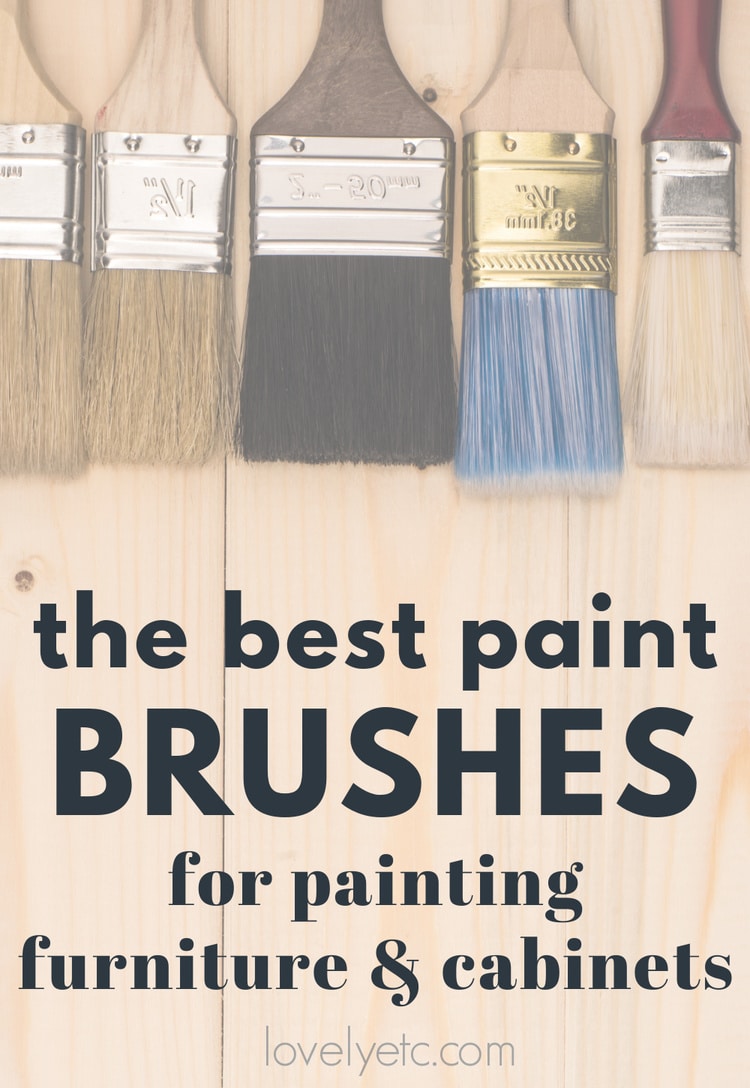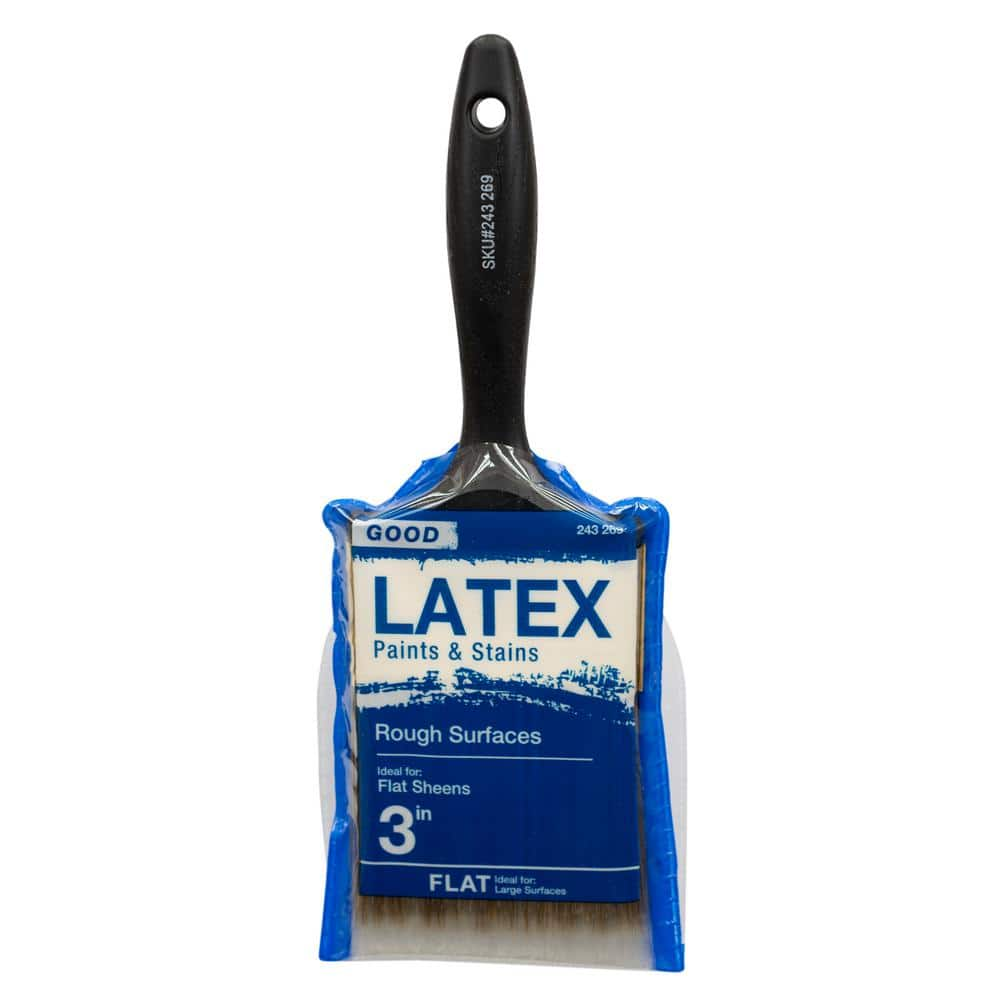Ever wonder just how to paint a smooth surface without leaving brush marks?
- Best Type Of Brush For Latex Paint
- Best Way To Clean Latex Paint Brushes
- Paint Brush For Painting Cabinets
- What Is The Best Latex Paint Brush
- Best Paint Brush For Acrylic Latex Paint
- Best Way To Clean Dried Latex Paint Brushes
- Best Latex Paint Brush Cleaner
You see all these items in your house that are painted with a brush, such as cabinets, furniture, railings, trim, baseboards, and other woodwork, yet you don’t see brush marks when a professional does it.
A brass plated steel ferrule reinforces the brush head so it isn't too flexible in your hand. For the best finish, you can use this brush with latex and oil-based paints. Best One-Inch: PROFORM TECHNOLOGIES Proform CS1.0AS Buy on Amazon Buy on Walmart. Bates Paint Brushes - 4 Pack, Treated Wood Handle, Paint Brush, Paint Brushes Set, Professional Brush Set, Trim Paint Brush, Paintbrush, Small Paint Brush, Stain Brush. The brush head is the working end of a paint brush. Brush head bristles, or filament, can be made from a variety of materials. Synthetic paint brushes offer more versatility and can be used with all paint types. In general, the best paint brush for oil-based paint will have natural bristles. The best alternative for latex would be a dual action, gravity feed airbrush in combination with a small compressor capable of churning out a minimum of 25-30 PSI. This entire setup shouldn’t cost you more than 60-80$. Here’s what I would go for.
What’s their secret?
When you do it, after everything dries, you see a line-up of deep canyons left behind by the brush. They show your every move, each bristle and strand of brush marks going where you went with your brush.
The truth is there’s no magic going on with the pros. They just use the tricks of the trade. Knowledge + technique + a little experience goes a long way to getting your professional painting look.
Covered below, we open up the book on how to avoid brush marks and also see if you can fix brush marks that are already there.
5 Steps to No More Brush Marks
Here’s the best 5 tips to use to get the most professional look out of your brush painting.
1. Fast Isn’t Always Best
When it comes to painting fast, the most important speed we’re talking about is paint drying time. What’s that old saying about something extremely slow and boring– “it’s like watching paint dry!”
The main reason you get paintbrush marks in the first place is because the paint hasn’t flowed out completely before it’s dried.
So, the first tip in avoiding paintbrush lines is to buy slow-drying paint. This is usually higher quality paint that is labeled to take up to 24-hours to dry.
Beware of labels that say “dry to the touch” after a couple hours, or Quick-Dry. While this might be helpful if you’re in a hurry to complete a project, it may not lead you to the best results.
You really do want to remember that phrase from above about watching paint dry. Remember an even better phrase too when it comes to painting: “Slow Makes Paint Flow!”
And flowing paint means a smoother finish.

The only word of caution here is to be careful not to bump the paint or handle painted surfaces while they’re drying since you may be used to faster drying times.
2. Go Horizontal
A second trick to help you avoid those unwanted brush marks is to always paint on a horizontal plane if possible.
In other words, take down doors for painting or paint trim before installing. This will allow you to lie them flat and paint on top of them, so paint can flow evenly as it dries.
Best Type Of Brush For Latex Paint
One of a painters best tools is actually a pair of saw-horses. These also help make painting large or long pieces easy as they can be positioned at just the right level.
This tip really piggy-backs off of the first one above about paint flowing. A nice, flat surface will allow gravity to pull the paint in all directions evenly…like a small pebble dropping in a placid lake.
So what happens when you paint vertically?
When you paint up and down with a brush those vertical brush lines just stay there as nothing allows them to spread out into each other.
You want those ridges from your brush strokes to flatten out, going side-to-side.
3. Go with the Grain
Best Way To Clean Latex Paint Brushes
Another tip that you may already know (but need to do!) is to paint with the grain on wood surfaces.
Go in the same direction as the grain so that any brush strokes that do end up showing, will not be as noticeable.
4. Don’t Skimp, Do Two Coats

Next, realize that just about every paint job, done well, will need at least two coats. This is exactly whatgood, professional painters do.

That means, don’t try to lather it on thickly and soak it on in one coat.
Just make sure to cover the surface area with a good amount of paint evenly. Let it dry, and then come back and apply the second coat.
5. A Quality Brush Means a Quality Job
Finally, always (a big always!), buy a quality paintbrush. You’ll know it’s good because it’ll be a little more expensive than the rest on the shelf.
With proper paintbrush cleaning and care, you’ll have your brush for a long time. Bristles and hairs on these brushes will be of varying lengths and have a “slit-end” look at the ends of them instead of coming to a small point.
This “non-uniform” end lets paint clump more there, giving you a smoother application as paint glides on. Think of layered bangs in a good haircut, or carpeting with many fibers of different lengths – that’s what you’re after.
Now, if for any reason you didn’t end up with a really smooth surface and the paint has already dried, you can carefully sand down the fine grooves and ridges left by a brush with a fine, 120-grit type sandpaper.

Go over with a lint-free damp cloth to clean and try painting again keeping the tips above in mind.
There you have it, a few basic how-tos on avoiding paintbrush marks.
Paint Brush For Painting Cabinets
Choosing the right paintbrush can make all the difference in your next project. Hardware store shelves are lined with a multitude of options; so how do you know which brush to pick? The most important factor in determining which paintbrush is best for your project depends on the type of coating you’re using.
What Is The Best Latex Paint Brush
OIL-BASED COATINGS
Best Paint Brush For Acrylic Latex Paint
Natural bristle is the best choice for oil-based paints, varnishes, shellac, alkyd enamels, stains, and polyurethanes. The highest quality bristles come from mainland China. Experienced, traditional painters will say there’s nothing like the finish that a China bristle paintbrush can provide for oil-based coatings. If you’re painting a smooth surface, use a white China bristle for a smooth finish or, if you need to achieve an even finer finish, a China bristle blended with ox hair is recommended. When painting a textured surface, a black China bristle will work best because it’s slightly stiffer and is excellent for high-productivity applications. If you need to paint a rough surface, natural bristle brushes are not recommended. Rough surfaces will break the tips off of natural bristle and will ruin the brush. A synthetic, firm brush is best for this application even when using oil-based coatings because it’s very durable and will resist wear on the rough surface.
WATER-BASED COATINGS
Best Way To Clean Dried Latex Paint Brushes
Synthetic brushes are recommended for latex and acrylic paints and water-based wood finishes. Synthetic brushes are available in a variety of filaments including Chinex®, nylon, nylon/polyester blend, and polyester. Chinex® FTP® brushes are designed for today’s paints and offer excellent paint pickup and production with a smooth, professional finish and easy cleanup. Chinex FTP brushes will maintain their stiffness for control even when exposed to heat and humidity. Nylon brushes are very durable but may soften in hot weather or after prolonged use in latex paint. Polyester brushes will maintain their shape and control when exposed to heat but have lower paint pickup and production meaning you will spend more time loading your brush than the wall. Also, today’s paints contain more acrylic resins and fast-drying solids which stick to polyester making them difficult to clean and limit the life of the brush. A nylon/polyester blend brush combines all the positive qualities of nylon (precise tipping, excellent paint pickup, and smooth finish) and polyester (added stiffness and control) and is, by far, the most popular professional paintbrush choice due to their versatility.
Best Latex Paint Brush Cleaner
The Wooster Brush Company offers quality brushes for every variety of coating available, but different brushes excel in specific applications. To help you select the perfect brush for your next project, visit our Paint Brush Advisor. If you have additional questions or need more information, please contact our Customer Service Department.
